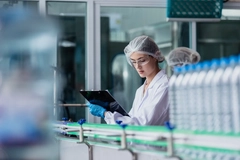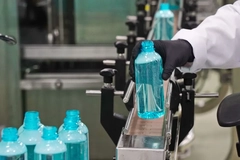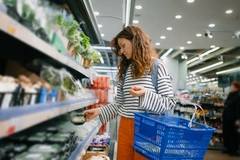Tetra Pak sustainability VP: Recycling is crucial to planetary health but not a silver bullet

19 May 2021 --- As the Rethinking Materials summit (May 19-20) opens its virtual doors, PackagingInsights releases Part 2 of its interview with Markus Pfanner, Tetra Pak’s vice president for sustainability and speaker at the event.
This time, Pfanner discusses waste management strategies, including the challenges in achieving full circularity, the efficacy of Extended Producer Responsibility (EPR) schemes, and how the COVID-19 pandemic is affecting progress.
In Part 1, Pfanner explored climate change, communicating packaging eco-credentials through design, and the holistic environmental approach.
What is the recommended disposal route for Tetra Pak cartons, and is full circularity possible with your packaging?
Pfanner: Tetra Pak cartons are recyclable. They are collected and recycled where efficient waste management and recycling infrastructure are in place. However, this doesn’t mean our job is done. We envision a world where carton packages never become waste and where every carton is collected and recycled, and we are working hard to realize this vision.
An important clarification is related to the fact that full recyclability is defined by recyclability in practice (packaging material structure compatible with recycling streams) and at scale (large establishment of collection and recycling infrastructure to turn the packaging materials into new materials after use). Tetra Pak drives strategic activities to address both criteria and ensure full recyclability of all cartons in the markets where we operate.
.png) While all Tetra Pak cartons are recyclable, obstacles stand in the way of circularity.Carton packages with a simplified material structure – increased fiber content and decreased plastic content – increase the packaging materials’ value. As a result, the value of the post-recycled materials grows and makes an even better business case for recyclers.
While all Tetra Pak cartons are recyclable, obstacles stand in the way of circularity.Carton packages with a simplified material structure – increased fiber content and decreased plastic content – increase the packaging materials’ value. As a result, the value of the post-recycled materials grows and makes an even better business case for recyclers.
Beyond packaging, we lead and contribute to initiatives to drive major improvements in waste management and recycling infrastructures globally, investing over and above the regulatory requirements.
In this way, we have helped to grow the number of facilities that recycle cartons from 40 in 2002 to more than 190 in 2020. Simultaneously, we are raising consumer awareness on the importance of recycling to create engagement and increase collection – all of that by working collaboratively with other players across the value chain.
When addressing the challenges to scale up recycling, it’s worth noting that circumstances vary greatly across geographies. Some of the barriers include:
- Lack of waste management policy and infrastructure, specifically in middle- and low-income countries where collection relies on an informal sector and waste pickers.
- Insufficient capacity of recycling facilities to process materials.
- Limitations of currently scaled recycling technologies to handle certain materials and produce new materials with required properties to match the demand (like food-grade plastics), making it economically worthwhile to collect and process.
It’s clear that a systemic approach including all steps of the chain is required. Greater industry collaboration and signs of the increased focus and commitment to overcome challenges to scale up recycling of packaging can be seen on several fronts.
In a nutshell, recycling plays a critical role in addressing environmental issues, specifically with packaging waste, but it is not a solution on its own. As indicated earlier, it needs to be accompanied by efforts in upstream action regarding how packaging is designed and what materials are used.
Should suppliers like Tetra Pak pay for their products’ life cycle, including disposal, through EPR schemes?
Pfanner: Tetra Pak supports EPR policy for packaging to increase recycling and prevent litter, which has proven to be an effective tool for increasing recycling rates. We have been, and continue to be, a committed partner in developing and implementing most of the existing EPR schemes for packaging waste.
We also believe that packaging recycling should be a responsibility shared by governments, local authorities, producers and citizens. It is the role of national governments to put legislation in place to set the ground rules for recycling, that of local authorities and industry to jointly establish collection systems and that of industry to ensure recycling solutions. .png) Pfanner says Tetra Pak support EPR schemes that would require suppliers to pay for the full life cycle of their products.
Pfanner says Tetra Pak support EPR schemes that would require suppliers to pay for the full life cycle of their products.
Only consumers can separate and sort waste at the source, and only producers can put recyclable packaging onto the market. Each actor has a critical role to play.
What COVID-19 market trends are you discerning and how are you adapting?
Pfanner: According to Tetra Pak’s latest annual Index report, the pandemic has displaced the environment as the number one consumer concern. However, this [the environment] is still ahead of anything else, even economic issues.
According to this study, consumers are increasingly aware of a dilemma between the need for greater food consumption and the impact on our planet – both in terms of packaging waste and food waste. Importantly, solving this dilemma is also something they are looking to business to drive forward.
Also, in the wake of the pandemic’s economic impact, many consumers worldwide are facing immediate pressures on health and disposable income. This is resulting in new purchasing patterns we believe will stay relevant in the next months, such as growing preference for preventive health products like immunity-boosting foods and increased demand for tamper-proof packaged food – especially when the packaging can reassure consumers on the content safety.
.png) COVID-19 has impacted consumer concerns over health and sustainability.At-home consumption occasions have also gone through some re-shuffling, and this opened the door to more frequent snacking and indulgence moments, besides offering more occasions for home cooking. Consequently, we saw carton-packaged basic food for ambient distribution grow, such as UHT milk, sauces, table wine. Our innovation legacy gives us the privilege and the responsibility to continue to help manufacturers cope with this new landscape of consumer needs and concerns.
COVID-19 has impacted consumer concerns over health and sustainability.At-home consumption occasions have also gone through some re-shuffling, and this opened the door to more frequent snacking and indulgence moments, besides offering more occasions for home cooking. Consequently, we saw carton-packaged basic food for ambient distribution grow, such as UHT milk, sauces, table wine. Our innovation legacy gives us the privilege and the responsibility to continue to help manufacturers cope with this new landscape of consumer needs and concerns.
In addition, since the start of the COVID-19 outbreak, we had to adapt and adopt new ways to support our customers to help maintain food supplies worldwide. On services, we are increasingly using digital technologies such as virtual commissioning and remote installation, allowing us to be quicker in response time and keep our customers’ operations running.
We have seen some positive outcomes in Europe and Central Asia as a result. Also, physical distancing has required us to rethink the way we interact with our customers, and we have quickly transformed the way we work across many activities such as product development, product trials, ideation initiatives and workshops.
For example, we have made all our product trials for customers virtual, as timing is a critical element for NPD success, virtual trials have been key to ensure customers are not missing these vital windows of opportunity.
Not only did the quality of our virtual trials match the outcomes of our traditional face-to-face approach, but in some instances, they increased customer involvement. Without the need to travel, more customers could observe each trial. Overall, these “touch-less” opportunities save time and – obviously – cut carbon emissions.
Ahead of Rethinking Materials, PackagingInsights also spoke with event speakers Hugo Menilo, Unilever’s global foods packaging director, DuPont’s Renee Henze, director of global marketing and commercial development for bio-based materials and Dr. Michael Saltzberg, global business director for biomaterials, Jun Wang, packaging innovation and global design for Colgate-Palmolive, and Marco Jansen, Braskem’s director of circular economy and sustainability for EU and Asia and global director of bioplastics.
By Louis Gore-Langton











